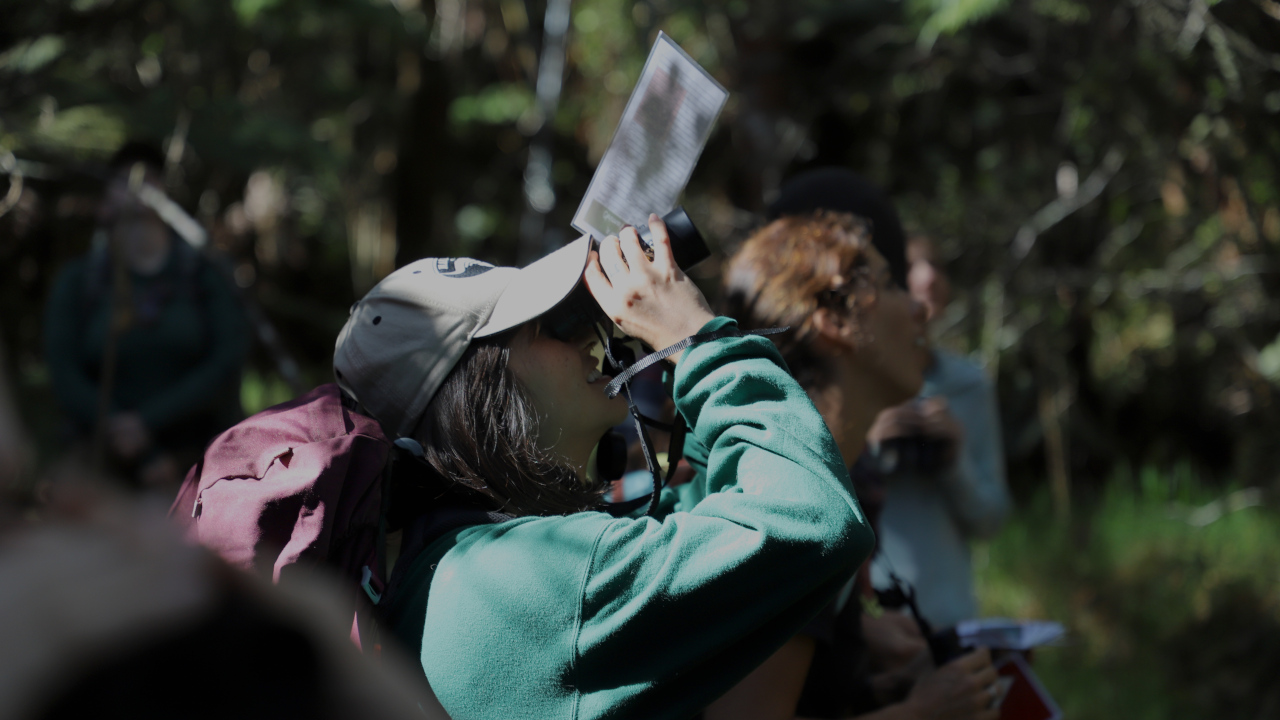(BIVN) – The Year of the Forest Birds (ka Makahiki o Nā Manu Nahele) in Hawai‘i wrapped up this month, ending with a traditional holiday bird count on the Big Island.
More than a dozen volunteers joined staff from the Hawaiʻi Department of Land and Natural Resources’ Division of Forestry and Wildlife (DOFAW) to count birds at the Puʻu Maka‘ala Natural Area Reserve on Saturday, December 14th.
The Hawaiʻi DLNR provided this account of the event:
The count on a warm sunny day at the Pu’u Maka‘ala Natural Area Reserve (NAR) took two spotting teams into perhaps the richest native forest bird habitat anywhere in Hawai‘i. So far, the NAR has remained free of avian malaria, which is causing the extinction of some species of native birds, particularly those in the Honeycreeper family.
During an introduction for the volunteers, Bret Mossman, a bird biologist with DOFAW explained, “We haven’t had too many impacts from the mosquito borne disease on our native bird populations here. And so, we’re very fortunate to still have three endangered species, the ʻakiapōlāʻau, Hawaiʻi akepa and ʻalawī. And then we have ʻiʻiwi, ʻapapane, ʻōmaʻo, ʻelepaio, and ʻamakihi.”
Andrea Buskirk, an outreach and education specialist with the DOFAW Hawai‘i Island Branch was another of the count’s leaders. “It’s a wonderful opportunity because this protected forest, we’ve highlighted it as a forest that persists, as so many conservation tools have been applied. That’s why we find ourselves in the home of the endangered birds and alongside our outplantings and within the largest rat grid in the state. So, we’re really able to highlight not just the species, but the management that allows them to persist here.”
With binoculars dangling around their necks and tally sheets at the ready the volunteers walk through the thick native forest and upon hearing the call of a bird all eyes focus skyward to the treetops.
Patterned after and reporting results to the Audubon Society, the bird counts are considered a great citizen science opportunity. Buskirk added, “Today, we’re highlighting hot spot areas, hoping to just share about these special birds where we can find them. So, we’re influencing the count in that way. This is for some people, a once in a lifetime opportunity to meet these birds in their habitat.”
Jessica Middleton jumped on the opportunity. “I got the email and I immediately signed up. I always wanted to go to an area where you can’t go. It’s a restricted access kind of place, which makes it extra attractive. I love all native species.”
After four hours of counting, the teams tallied 199 individuals of the endangered or threatened forest bird species. The volunteers also helped set and replenish traps which help keep predators like rats, cats, and mongoose away from the birds.
Alex Wang another of the count leaders reflected, “It was originally a Christmas Bird hunt when folks, instead of shooting all the birds, decided to start counting birds and we’re able to totally flip that. Now, you know the idea of going out and shooting as many birds as you can on Christmas is laughable and it’s not what we do anymore. So, it’s really a nice tradition.”
The data collected by observers over the past century allows researchers, conservation biologists, wildlife agencies and other interested individuals to study the long-term health and status of bird populations across North America. When combined with other surveys, it provides a picture of how the continent’s bird populations have changed in time and space over the past 125 years. The long-term perspective is vital for conservationists. It informs strategies to protect birds and their habitat and helps identify environmental issues with implications for people as well.




by Big Island Video News9:36 am
on at
STORY SUMMARY
HAWAIʻI ISLAND - More than a dozen volunteers joined staff from the DLNR Division of Forestry and Wildlife to count birds on Saturday, December 14th.